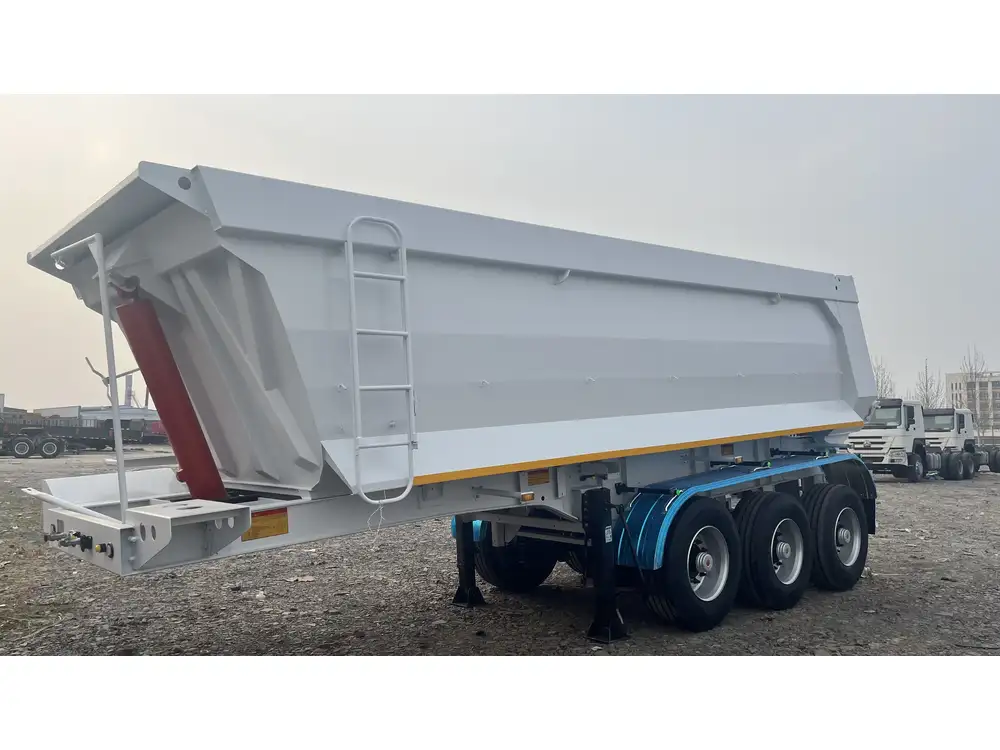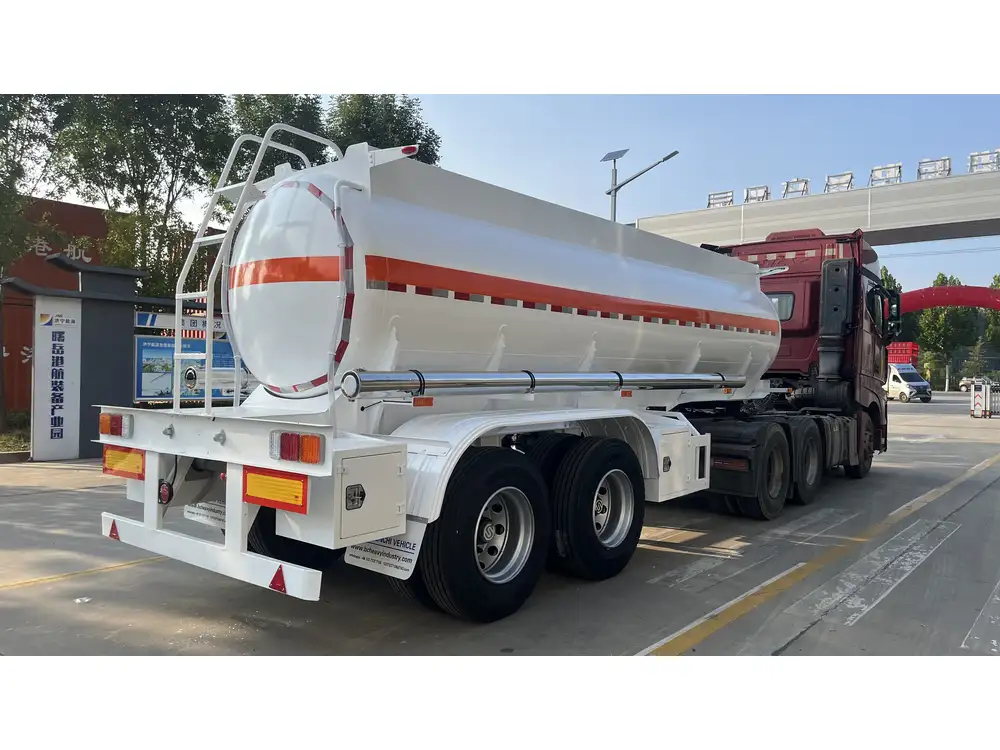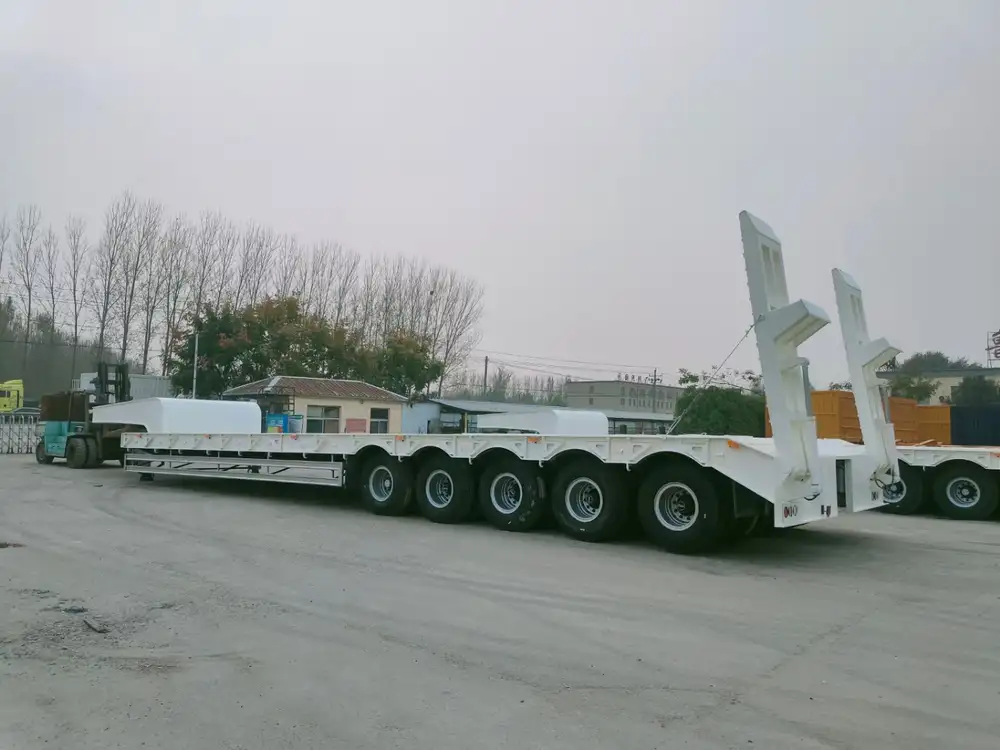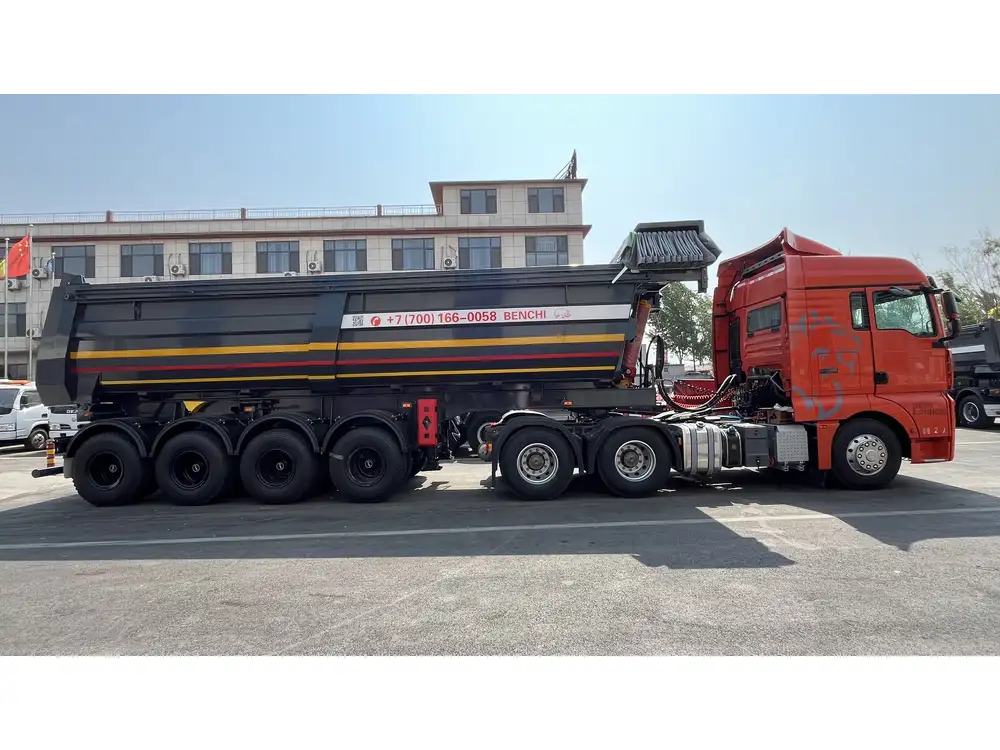When delving into the realm of semi-trailers, one encounters a variety of design features that enhance their functionality and usability in transportation. Among these features, spread axles hold significant value. This article will explore what spread axles are, their benefits, how they differ from other axle configurations, and their implications in the trucking industry.
What Are Spread Axles?
Spread axles refer to a configuration in which the distance between the axles is increased beyond what is customary in traditional axle setups. Typically, the axles are spread over a wider range—generally between 10 to 15 feet. This distinct arrangement allows for better weight distribution and can significantly influence the trailer’s overall performance.
Key Characteristics of Spread Axles:
- Wider Axle Spacing: Spread axles are designed to separate the wheel assemblies more than Standard axles.
- Increased Stability: The broader distance between axles improves the stability of the trailer, especially during cornering.
- Enhanced Weight Distribution: It aids in complying with weight regulations by distributing the load more effectively across the trailer.
- Reduced Tire Wear: With better load distribution, spread axles can lead to lower tire wear, enhancing the lifespan of the tires.

Benefits of Using Spread Axles
1. Improved Stability and Handling
When it comes to navigating diverse terrains or tight corners, spread axles provide superior stability. This stability comes from the wider stance, which minimizes the risk of rollover and enhances the control of the trailer, leading to safer driving experiences.
2. Weight Compliance
Transportation regulations often necessitate strict adherence to weight limits. Spread axles allow businesses to maximize payload capacity while meeting these regulations. By distributing the load more evenly and expanding the footprint of the trailer, they help in achieving compliance without incurring significant costs.

3. Reduced Road Damage
Semi-trailers with spread axles can lessen road damage, which is crucial for municipalities managing public infrastructure. The contact of tires with the ground is distributed more evenly, decreasing the wear and tear on road surfaces.
4. Better Efficiency
By promoting efficient weight distribution, spread axles play a significant role in fuel efficiency. When weight is properly balanced, there is less strain on the tractor and trailer, leading to better fuel economy over time.
5. Optimized Tire Performance
With the enhanced distribution of the load on the tires, spread axles help in prolonging tire life. Users can experience reduced tire repair costs and extended periods between replacements.

Comparison with Other Axle Configurations
To better understand the advantages of spread axles, one must compare them with traditional axle types often found in semi-trailers. Below is a detailed comparison, highlighting core differences:
| Feature | Spread Axles | Tandem Axles | Single Axle |
|---|---|---|---|
| Distance Between Axles | Wider spacing (10-15 feet) | Closer spacing (usually 3-5 feet) | Single axle primarily located at the rear of the trailer |
| Weight Distribution | Excellent weight distribution across a broader area | Moderate weight distribution; potential for stress on specific points | Limited weight distribution; concentrated load |
| Stability | Higher stability and cornering capability | Good stability; more susceptible to rollovers than spread axles | Relatively low stability; limited performance on turns |
| Payload Capacity | Higher payload capacity due to effective weight management | Standard payload capacity; can be restrictive due to weight distribution | Lower payload capacity due to concentrated weight |
| Usage | Ideal for heavy loads needing compliance and stability | Common in general freight and logistics | Suitable for light loads and low-volume transport |
Applications of Spread Axles
The distinct features of spread axles make them pertinent across various applications in the transportation sector:
1. Heavy Haul Transportation
For transporting heavier materials like machinery, steel, and construction materials, spread axles provide the necessary support and stability required for such loads.

2. Specialized Equipment Transport
Many specialized trailers equipped with spread axles are used to transport oversized and unique cargo, effectively complying with legal weight limits while ensuring safety.
3. Cargo Transport
For businesses focused on maximizing payload, spread axles are often the choice when transporting goods that require careful weight management and distribution.
Challenges and Considerations
While spread axles offer many advantages, it is essential to consider certain challenges associated with them:

1. Maneuverability in Tight Spaces
The wider axle configuration can pose challenges when maneuvering in narrower spaces or during complex loading and unloading scenarios. Drivers may need to practice navigating these trailers more carefully due to their length and width.
2. Higher Initial Costs
The initial investment in a semi-trailer equipped with spread axles may be higher than that for standard axle configurations. However, when considering the long-term benefits regarding tire wear and fuel efficiency, the up-front cost may be justified.
3. Regulatory Considerations
Different jurisdictions may have special requirements for trailers with spread axles, including permits for specific weight distributions. It’s advisable to be well-versed in local transport regulations to ensure compliance.

Maintenance and Best Practices for Spread Axles
To maximize the longevity and performance of a spread axle system, proper maintenance is crucial. Here are some best practices:
1. Regular Inspections
- Frequently check axle alignments and connections to ensure they are in proper working condition.
- Inspect the integrity of the tires to avoid uneven wear and tear that can affect performance.
2. Tire Maintenance
- Rotate tires appropriately to ensure even wear across all tires.
- Maintain correct air pressure as per the manufacturer’s recommendations.

3. Weight Management
- Always measure loads to ensure compliance with weight distribution regulations.
- Make necessary adjustments to the load to maintain balance across the axles during transport.
Conclusion
In essence, spread axles on semi-trailers present a compelling choice for businesses focused on enhancing their logistics capabilities while meeting regulatory standards. The design promotes better weight distribution, increased stability, and reduced tire wear, facilitating compliance in weight-sensitive operations.
By applying informed decision-making, addressing the outlined challenges, and adhering to best practices, fleet operators can optimize the advantages of spread axles. As the trucking industry continues to evolve, understanding the implications and benefits of varied axle configurations remains pivotal for ensuring long-lasting operational success.
In navigating the complexities of semi-trailer designs, spread axles stand out as a prime consideration for those looking to enhance performance and reliability in their transportation endeavors.



